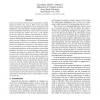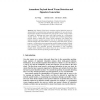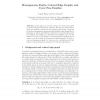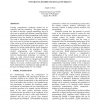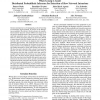44 search results - page 5 / 9 » High-Fidelity Modeling of Computer Network Worms |
ACSAC
2004
IEEE
13 years 11 months ago
2004
IEEE
Large-scale attacks generated by fast-spreading or stealthy malicious mobile code, such as flash worms and e-mail viruses, demand new approaches to patch management and disinfecti...
RAID
2005
Springer
14 years 1 months ago
2005
Springer
New features of the PAYL anomalous payload detection sensor are demonstrated to accurately detect and generate signatures for zero-day worms. Experimental evidence demonstrates tha...
ICITS
2011
12 years 11 months ago
2011
In this paper, we use the concept of colored edge graphs to model homogeneous faults in networks. We then use this model to study the minimum connectivity (and design) requirements...
WSC
1997
13 years 9 months ago
1997
Creating comprehensive simulation models can be expensive and time consuming. This paper discusses our efforts to develop a general methodology that will allow users to quickly an...
AAAI
2006
13 years 9 months ago
2006
Intrusion attempts due to self-propagating code are becoming an increasingly urgent problem, in part due to the homogeneous makeup of the internet. Recent advances in anomalybased...
